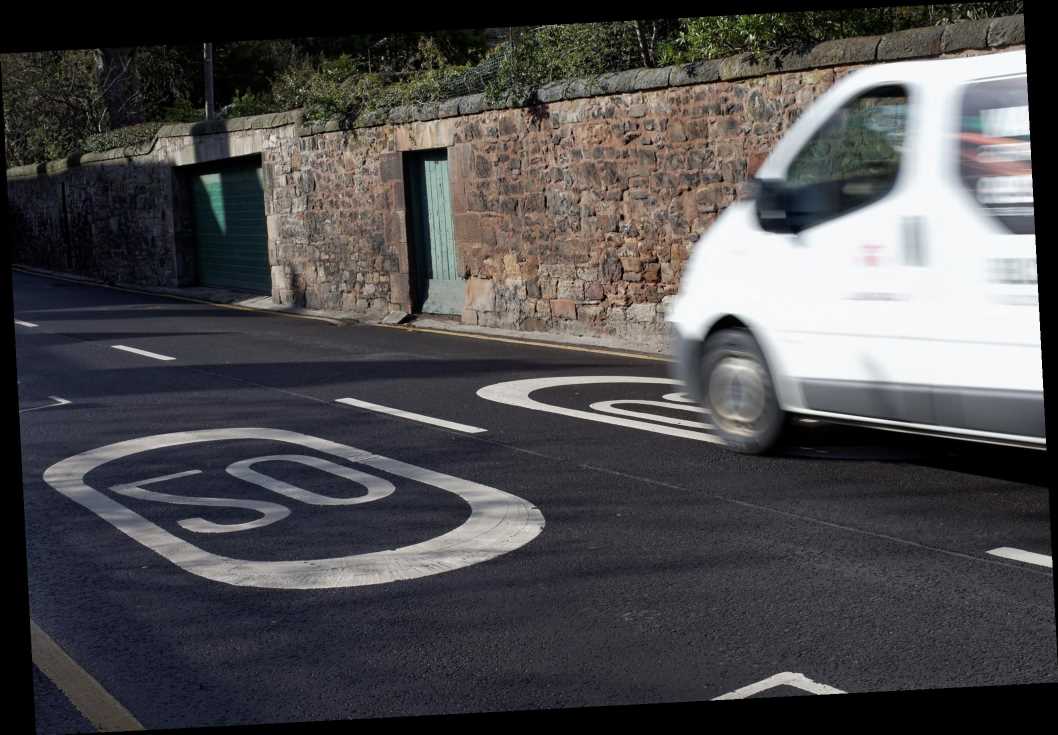REDUCING the speed limit to 20mph does not make roads safer unless speed humps are also introduced, research has found.
Just altering the signs on roads without introducing other speed reducing measures has little impact as most drivers simply ignore the them.
While many towns and cities up and down the country have cut the speed limit to 20mph in residential areas, research commissioned by the Department for Transport found little evidence of any safety benefits on roads that just had the new signs up.
London, Birmingham, Liverpool, Edinburgh and Glasgow have all reduced the speed limit in recent years.
Queen’s University Belfast (QUB), which carried out most of the research, included a review of nine studies of 20mph zones.
The report, published in the Journal of Transport and Health, made the distinction between speed limits and speed zones.
Speed limits typically involve legislation and road signage whereas speed ‘zones’ also involve the use of physical traffic calming measures such as road narrowing and speed humps.
Researchers found these zones reduced collisions by up to 41 per cent and cut casualties, including slight, serious and fatal injuries, by up to 46 per cent, The Times reports.
Dr Ruth Hunter, of the Centre for Public Health at QUB, said: “Our findings show a growing body of evidence to support the use of 20mph zones, showing them to be effective in reducing the number and severity of collisions and casualties.
“Our research also found an increase in participants walking and children cycling spontaneously in 20mph zones, indicating the potential indirect positive impact on physical activity.”
SPEED LIMITS AND ZONES
She added: While our research has shown a number of benefits of 20mph speed zones, it has also highlighted a lack of current evidence relating to the impact on public health, air pollution, and noise pollution.
"Further evidence is also required around the effectiveness of signage-based speed limits. We need to continue to gather and build on this evidence so that we can adequately inform future road safety policies that could help to address the global epidemic around road injuries.”
Edmund King, president of the AA, said that imposing a 20mph speed limit was most effective where “drivers can easily understand why the limit is set, for example, [because of] a school or playing fields. Targeted 20mph limits tend to be more effective than blanket limits”.
Mr King added: “We need more variable speed limits linked to time of day. For example, in the US, most drivers slow down outside schools with flashing yellow lights, but not at 3am when there are no children around. The previous research suggests blanket 20mph zones dilute the speed limit’s effectiveness and compliance.”
Dr Andy Cope, director of insight at Sustrans, the walking and cycling charity, welcomed the research.
He said: “Lowering vehicle speed in residential areas to 20mph not only improves safety for our most vulnerable road users, but it can also help to reduce the dominance of vehicles making our streets and places more attractive to walk, cycle and enjoy.”
Figures from the Department for Transport released in November last year showed that nearly all drivers in Britain ignored the 20mph speed limit.
It was found that up to 94 per cent of drivers exceeded the speed limit across the country.
Cars drivers were found to be the worst culprits for speeding in 20mph zones, with 86 per cent fleeting the limit.
Two-wheelers closely follow at 85 per cent, and light commercial vehicles with 84 per cent.
Figures, also from last year, showed that 20 councils in the UK had spent £11million on lowering the speed limit in their areas.
But in some cases rates of serious accidents have actually gone up as frustrated drivers take risks to pass slowcoaches.
A report found the rate of people killed or seriously injured went up in seven out of the 13 zones where speeds were cut.
Source: Read Full Article



